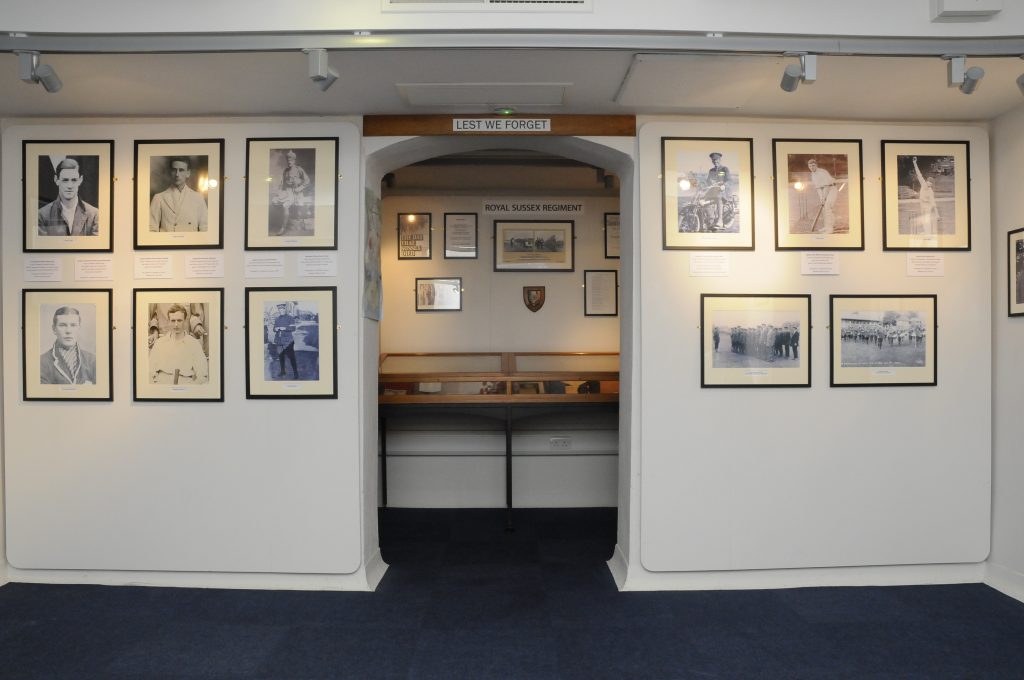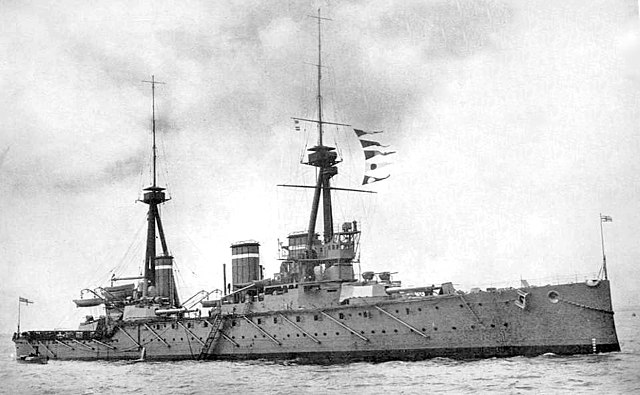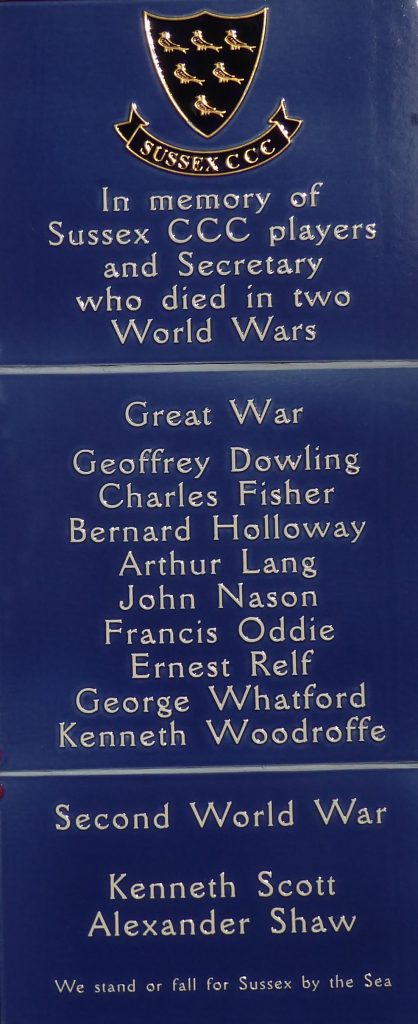
They made the ultimate sacrifice
The focus of Gallery Two is the contribution that Sussex players made to World War One and Two, and in particular to those who made the ultimate sacrifice: their lives. There are photographs of all those who died in the two wars and a display about General Dempsey, who served in both wars and who in between played two matches for Sussex in 1919
There was no county cricket between 1914 and 1919 and at least 219 players served in the First World War. George Cox was about to have a benefit match as war was declared on 4 August, but the match against Surrey was cancelled.
Ranji ,who had played for Sussex from 1895-1904 and then again in 1908 and 1912, decided at the outbreak of war to put the resources of his state of Nawanagar at the disposal of Britain. He owned a large house in Staines which was converted into a forty bed hospital for wounded officers. In November he left for the Western Front in France where he was made an honorary major in the British army.

During the Battle of Jutland, Invincible was part of a scouting force for the Grand Fleet when a magazine explosion ripped the ship apart on 31 May 1916 and she was sunk with the loss of 1026 lives.
He was not allowed to take any risks so was given administrative tasks to do. Once the winter began he began to suffer from chilblains and asthma from the snow, rain and sleet. By April he was suffering from bronchitis and so he was sent back to England where he made a recruiting speech in Eastbourne before he travelled north to go grouse shooting in Yorkshire. During a shoot, on the last day of August, he was accidently shot in the eye and he had his right eye removed. By the end of the year he had travelled back to India where he remained for the remainder of the war. Ranji was never to go anywhere near the front. Others were not so lucky and eight former players as well as the club secretary were killed during World War One.
World War Two
In the Second World War, following Sussex’s game against Yorkshire which ended the day Germany attacked Poland, there were no more county games at Hove until 1946. There was plenty of cricket at Hove during the war but with many cricketers joining the armed forces, they represented service sides, including a match between the South of England and the Australians. The South consisted mainly of Sussex players, including James Langridge, with Keith Miller playing for Australia. There was cricket following VE Day but there were no competitive championship games. There were five ‘Victory’ tests between England and Australia, but they were deemed unofficial tests. Two Sussex players died during the war, Kenneth Scott and Alexander Shaw, and countless others served in the armed forces in theatres around the world.
To read more about those Sussex cricketers and Secretary who died during World War One and Two, click here
